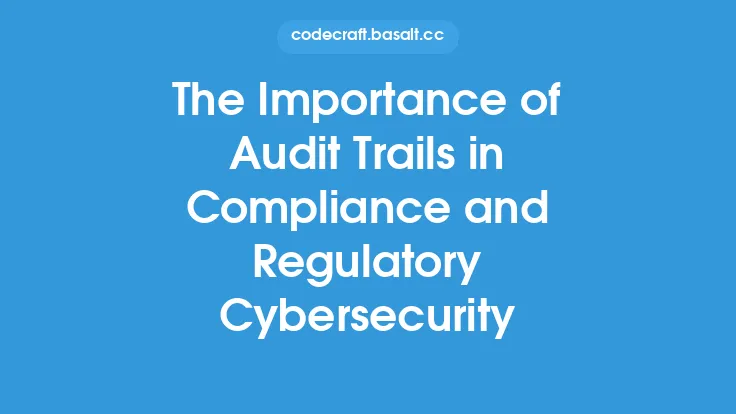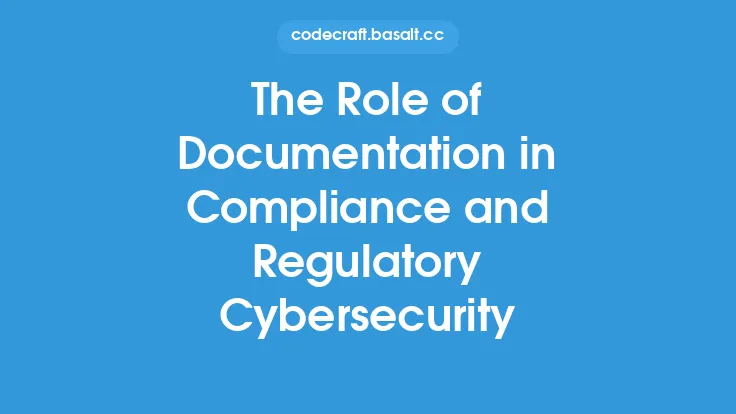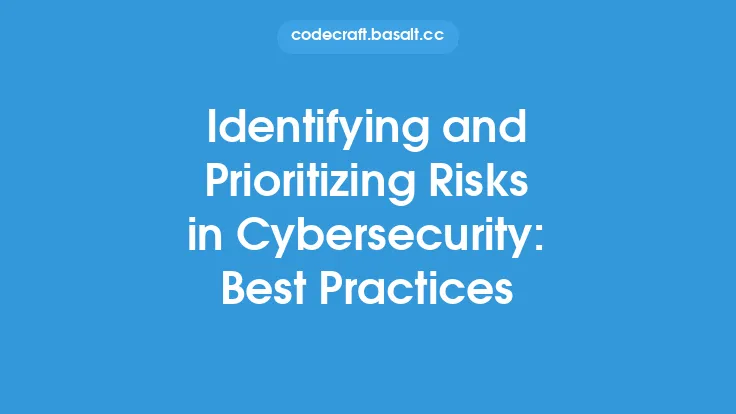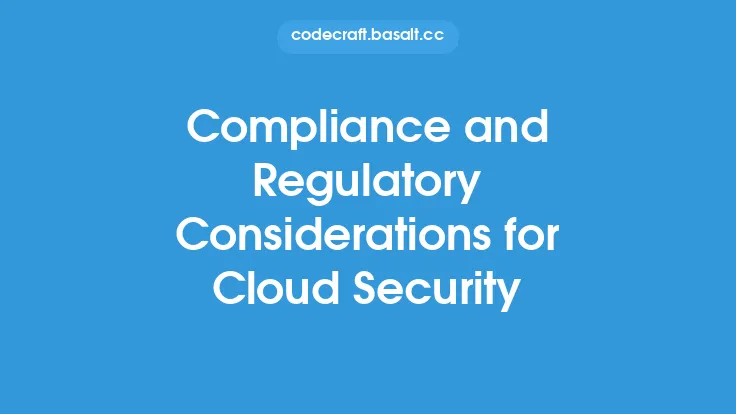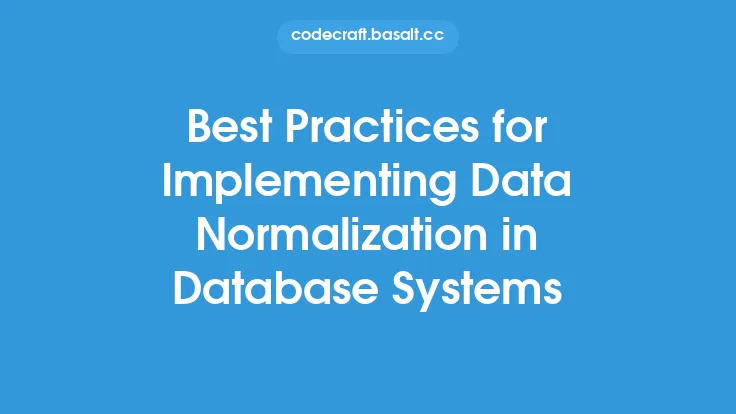As the cybersecurity landscape continues to evolve, regulatory compliance has become a critical aspect of software development. Developers must navigate a complex web of laws, regulations, and industry standards to ensure their products and services meet the required security and privacy standards. In this article, we will delve into the best practices for developers to achieve regulatory compliance in cybersecurity, focusing on the evergreen principles that remain relevant despite the changing landscape.
Introduction to Regulatory Compliance
Regulatory compliance in cybersecurity refers to the process of ensuring that an organization's software, systems, and processes meet the required security and privacy standards set by laws, regulations, and industry standards. This includes compliance with data protection regulations, such as the General Data Protection Regulation (GDPR) and the California Consumer Privacy Act (CCPA), as well as industry-specific standards, such as the Payment Card Industry Data Security Standard (PCI DSS) and the Health Insurance Portability and Accountability Act (HIPAA). Developers must understand the relevant regulations and standards that apply to their products and services to ensure compliance.
Risk Assessment and Management
A critical step in achieving regulatory compliance is conducting a thorough risk assessment and management process. This involves identifying potential security risks and vulnerabilities in the software or system, assessing the likelihood and impact of these risks, and implementing controls to mitigate or manage them. Developers should use established risk assessment frameworks, such as the National Institute of Standards and Technology (NIST) Risk Management Framework, to guide this process. By identifying and addressing potential security risks, developers can ensure that their products and services meet the required security standards and reduce the likelihood of non-compliance.
Secure Coding Practices
Secure coding practices are essential for ensuring regulatory compliance in cybersecurity. Developers should follow established secure coding guidelines, such as the Open Web Application Security Project (OWASP) Secure Coding Practices, to prevent common security vulnerabilities, such as SQL injection and cross-site scripting (XSS). This includes using secure coding techniques, such as input validation and sanitization, and implementing secure authentication and authorization mechanisms. By following secure coding practices, developers can reduce the risk of security vulnerabilities and ensure that their products and services meet the required security standards.
Data Protection and Privacy
Data protection and privacy are critical aspects of regulatory compliance in cybersecurity. Developers must ensure that their products and services handle personal data in accordance with relevant data protection regulations, such as the GDPR and CCPA. This includes implementing data protection by design and default, conducting data protection impact assessments, and ensuring that data subjects' rights are respected. Developers should also implement robust data security controls, such as encryption and access controls, to protect personal data from unauthorized access or disclosure.
Compliance Testing and Validation
Compliance testing and validation are essential steps in ensuring regulatory compliance in cybersecurity. Developers should conduct regular testing and validation to ensure that their products and services meet the required security and privacy standards. This includes conducting vulnerability assessments, penetration testing, and compliance scanning to identify potential security risks and vulnerabilities. Developers should also use established compliance testing frameworks, such as the NIST Cybersecurity Framework, to guide this process. By conducting regular compliance testing and validation, developers can ensure that their products and services meet the required security and privacy standards and reduce the likelihood of non-compliance.
Continuous Monitoring and Improvement
Continuous monitoring and improvement are critical aspects of regulatory compliance in cybersecurity. Developers should continuously monitor their products and services for potential security risks and vulnerabilities and implement improvements to address these risks. This includes staying up-to-date with the latest security patches and updates, conducting regular security audits, and implementing incident response plans to respond to security incidents. By continuously monitoring and improving their products and services, developers can ensure that they remain compliant with relevant regulations and standards and reduce the likelihood of security breaches.
Collaboration and Communication
Collaboration and communication are essential for achieving regulatory compliance in cybersecurity. Developers should work closely with other stakeholders, including security teams, compliance teams, and regulatory bodies, to ensure that their products and services meet the required security and privacy standards. This includes communicating compliance requirements and risks to stakeholders, collaborating on compliance testing and validation, and providing training and awareness programs to ensure that stakeholders understand compliance requirements. By collaborating and communicating effectively, developers can ensure that their products and services meet the required security and privacy standards and reduce the likelihood of non-compliance.
Conclusion
Regulatory compliance in cybersecurity is a critical aspect of software development, and developers must navigate a complex web of laws, regulations, and industry standards to ensure their products and services meet the required security and privacy standards. By following best practices, such as risk assessment and management, secure coding practices, data protection and privacy, compliance testing and validation, continuous monitoring and improvement, and collaboration and communication, developers can ensure that their products and services meet the required security and privacy standards and reduce the likelihood of non-compliance. As the cybersecurity landscape continues to evolve, it is essential for developers to stay up-to-date with the latest regulations and standards and to continuously monitor and improve their products and services to ensure regulatory compliance.

